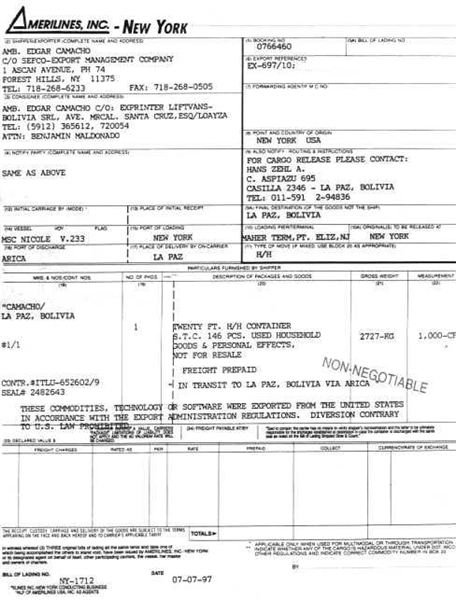What is Bill of Lading ?
What is Bill of Lading?
A bill of lading (B/L) is a document issued by the ship’s master or by a company’s authorised department or agent, confirming that cargo has been loaded on board. Along with specific details of this quantity of cargo, the condition of the goods, the place that they will be discharged and the consignee’s name is usually clearly indicated. A B/L indicates, simply put, how much of what cargo has been loaded on what ship and for what destination between which parties, and, moreover, indicates the condition of the cargo. It will often indicate who is the receiver of the cargo as well, or whether it is negotiable or not.
The Role of B/L
A Bill of Lading then becomes a document which has multifarious legal advantages. Firstly, it is a legally accepted receipt of goods. Secondly, it indicates a contract between the shipper and the vessel (or carrier), and will usually indicate all the agreed upon terms of this contract. It is also common to have standardised B/L formats following internationally accepted norms being used, which facilitate the transaction without each party having to laboriously go over the clauses for each shipment.
Most importantly, under certain conditions, it may be a negotiable instrument, which means that it is a document of title. Goods may physically be a thousand miles away, but, once loaded, such ae B/L becomes a critical document of ownership. This kind of B/L may be traded and transferred far away and endorsed to a third party much like a bank cheque. This characteristic of a B/L, that of being a document of entitlement to the physical goods being carried, is a unique characteristic which makes it much more than just a receipt of carriage of goods or a contract of carriage.
Such a B/L will order the carrier (ship) to release the goods to the person or entity who produces the B/L endorsed to him.
A B/L is thus the grease which enables global commerce to run smoothly, even when the parties involved are halfway across the world from each other.
Sample Bill of Lading
Clean and Dirty Bills of Lading
When cargo is loaded on board a ship, the Chief Officer will usually sign what is called a ‘Mate’s Receipt’, which is a receipt of goods having been accepted on board. He will also, after inspection, remark on the receipts as to the condition of the cargo. These remarks are then copied onto the Bills of Lading when these are issued.
It becomes obvious that a B/L with no remarks on it implies that the cargo shipped is in very good condition. Such a B/L is called a ‘Clean B/L’ and will obviously score higher over a B/L that is ‘remarked’ or ‘dirty’, which would then indicate that goods are in less than perfect condition. As an example, a ‘Dirty’ B/L on a shipment of bagged rice might be remarked as ‘265 bags wet’, which obviously would give relevant information to a potential receiver who has not yet even seen the cargo. He would then negotiate terms for purchase assuming that at least some of the rice would be damaged beyond repair.
Needless to say, a ‘Clean B/L’ is always much in demand in the industry.
Image Credit
Sample B/L: Sefco Export Management Company
This post is part of the series: Bills of Lading and Seaway Bills
Explanation of some unique documentation required when goods are carried by sea.
